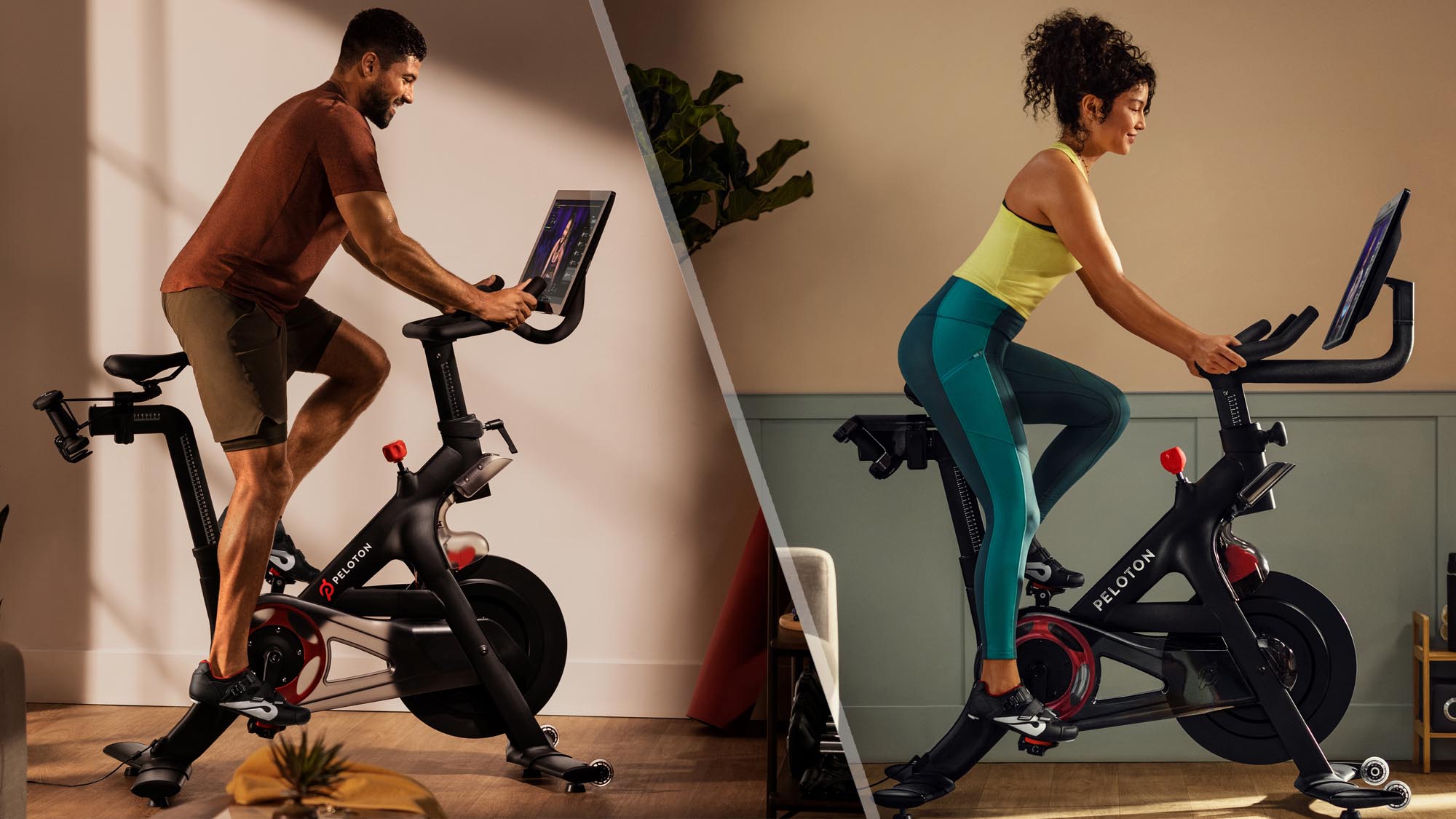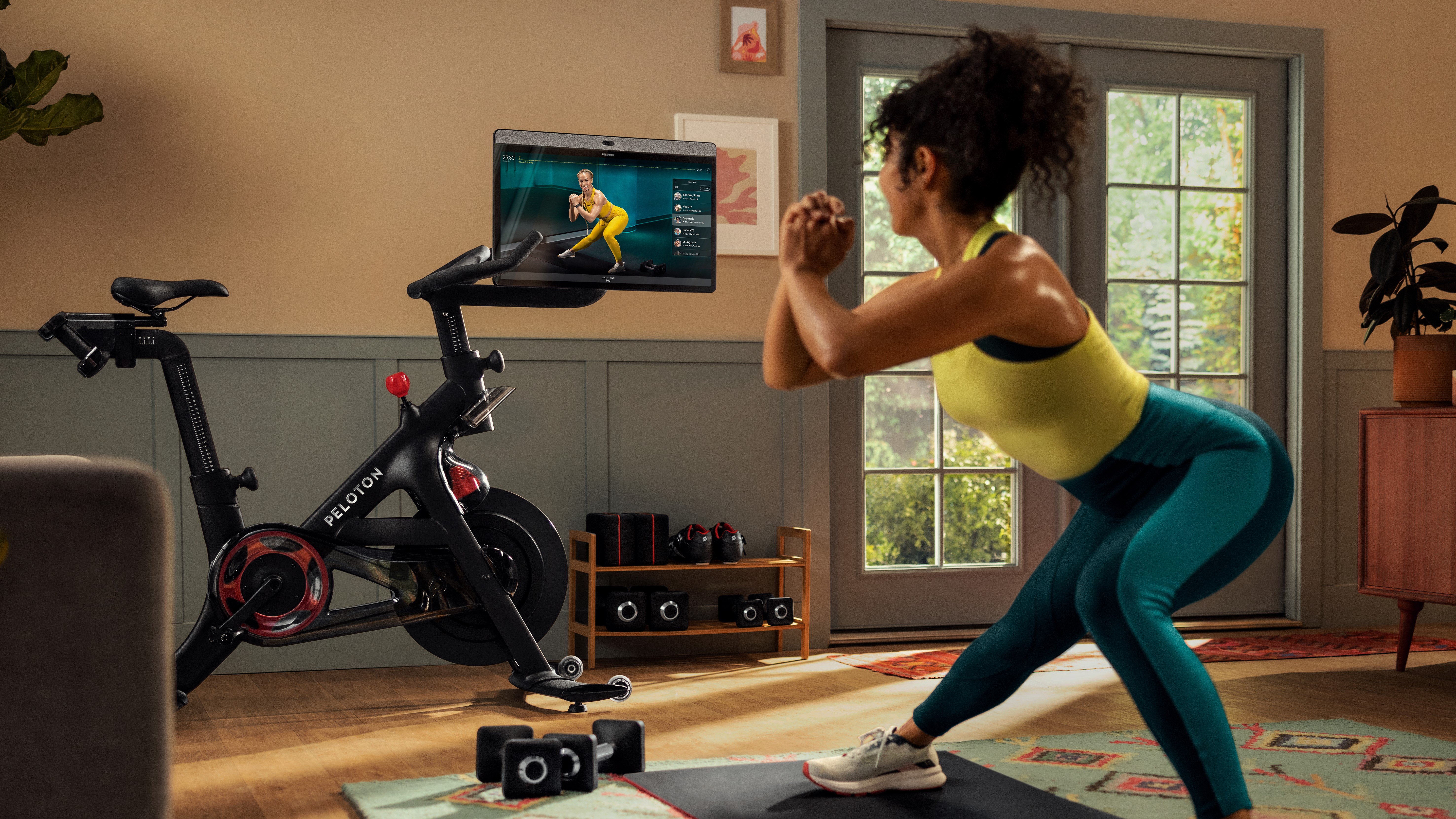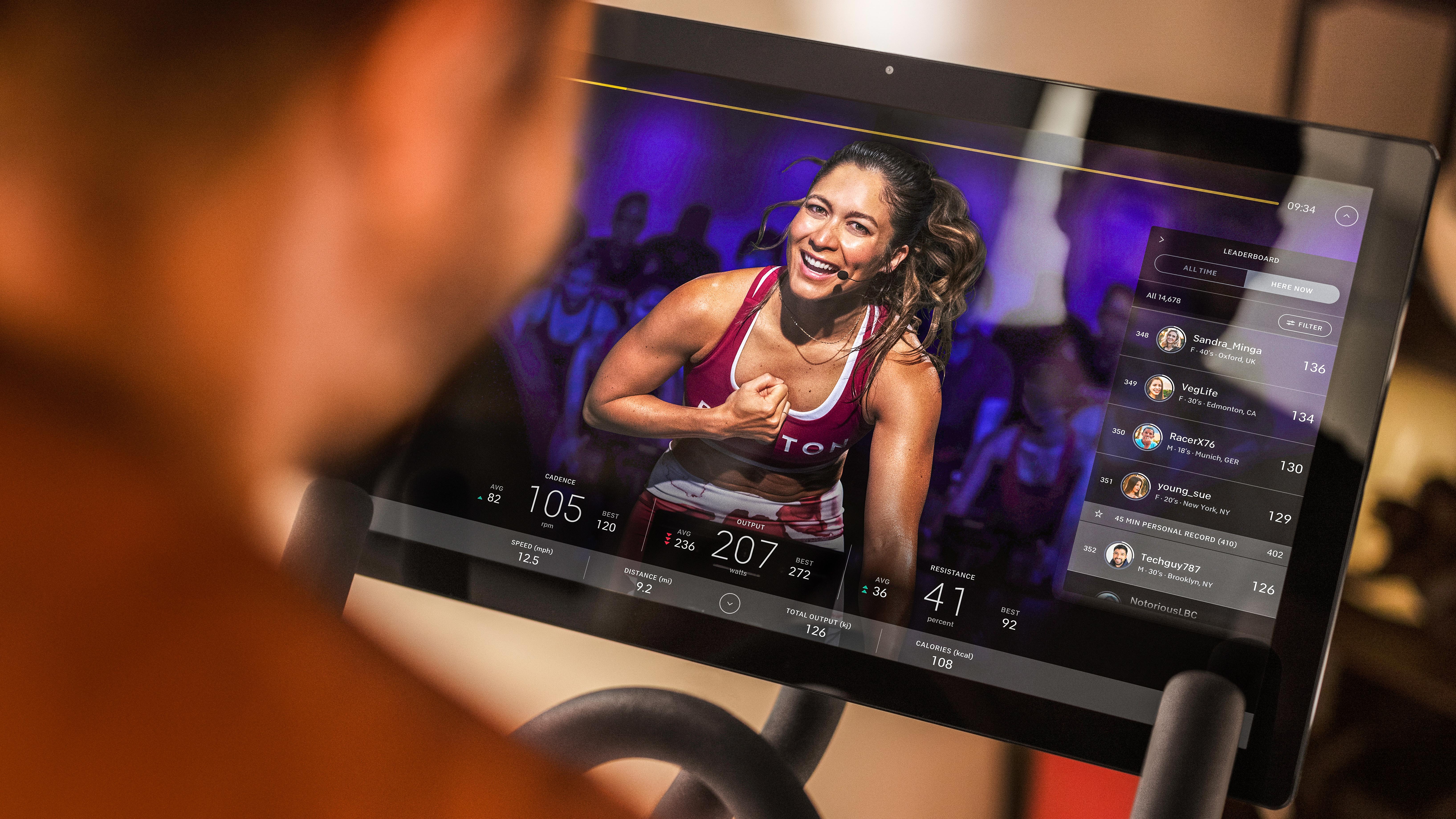Peloton Bike vs Peloton Bike Plus — Which should you buy?
Here’s which Peloton Bike to buy

So you’re thinking of adding one of the best exercise bikes to your home, and you have your heart set on a Peloton. Good decision, but do you go for the Bike or the Bike Plus? Having painstakingly cycled for miles on both bikes, we’re here to talk you through the similarities and differences between the two popular exercise bikes.
Both exercise bikes allow you to take Peloton’s plethora of live and on-demand classes, from its range of instructors. Both bikes are also available to rent as part of Peloton’s new rental scheme in the U.S. If you think you’ve already made your mind up, you can skip to our Peloton Bike review and our Peloton Bike Plus review to find out more.
If you're not in the market for an exercise bike, you can still use Peloton's app to access its wide range of classes. In May 2023, Peloton announced three new Peloton app membership options, including one that is completely free. Read more about the memberships, and the Peloton Gym feature here.
Peloton Bike vs Peloton Bike Plus: Price and availability
The Peloton Bike Plus costs $2,495/£1,995, which is $1,050/£650 more than Peloton’s cheaper Bike option, which retails for $1,445/£1,345.
For both bikes, there are plenty of financing options available, as well as bundles that combine the bike with accessories for a cheaper price. The cheapest bundle for the Peloton Bike is the Starter bundle, which includes the Bike, a pair of cycling shoes, a set of light dumbbells, and a bike mat for $1,645/£1,530. The same bundle for the Bike Plus costs $2,695/£2,180.
Right now the cost of both bikes includes the delivery and the set-up of the bike. Both bikes are available from Peloton directly. In the U.S., the Peloton Bike is now available on Amazon.
Winner: Peloton Bike — if you’re on a budget, and considering the fact you’ll have to pay for the monthly classes, the Peloton Bike is undoubtedly the cheaper option.
Get instant access to breaking news, the hottest reviews, great deals and helpful tips.

Peloton Bike vs Peloton Bike Plus: Design
At a glance, both of the bikes look pretty similar — they both have large screens that allow you to take the classes, they both only come in black, with red accents and they both have the same neat footprint, which is about the same size as a yoga mat at four feet long and two feet wide. The Bike has a metal cage at the back for two lightweight dumbbells, which can be used in abs and arms classes on the bike, whereas on the Bike Plus, this is plastic. The handlebar design differs slightly between the two bikes as well.
The most notable difference between the two bikes from a design standpoint is in the screens. On the cheaper Peloton Bike, the screen is slightly smaller, at 21.1 inches compared to the Bike Plus’ 23.8 inches. Both screens are HD, offering similar picture quality, but the Bike Plus has an anti-reflective coating — handy if you’re planning on positioning your bike right next to a window. The screen on the Bike Plus has a 360-degree swiveling mount, allowing you to tilt it up and down for a better view while cycling or 180 degrees left and right for floor workouts. The screen on the Bike doesn’t rotate from side to side.

From a technical standpoint, the resistance is slightly different on the Bike Plus, which has the advantage of an auto resistance option. This automatically changes your resistance on instructor cues, meaning you don’t have to worry about it during class.
Winner: Peloton Bike Plus — it might not sound that significant, but the rotating screen really does make a difference, especially if you plan on taking strength, HIIT or yoga classes and don’t want to have to do so behind your bike.
Peloton Bike vs Peloton Bike Plus: Features
As well as the screen and the resistance, the Peloton Bike sound system is slightly less powerful than that of the Bike Plus. The Peloton Bike has a 2-Channel rear-facing stereo speaker system with 16 watts of total power, whereas the Bike Plus has 2.2 Channel front-facing stereo speakers with 26 watts of total power and 2.2 rear-facing woofers. Both bikes connect to Bluetooth headphones, however, so if you’re not worried about playing the classes out loud through the bikes speakers, don’t let this bother you.
Talking of Bluetooth, the Peloton Bike has Bluetooth 4.0 connectivity, and the Peloton Bike Plus has Bluetooth 5.0 connectivity, although this mainly refers to the distance you have to be from the bike. As you’re unlikely to be connecting your headphones in a different room to the bike, the range shouldn’t be an issue.

The Peloton Bike has a microUSB port for charging your tech as you pedal, whereas the Peloton Bike Plus has a USB-C charging port. The camera on the higher spec model is also, as you’d expect, slightly higher spec — on the Peloton Bike the front facing camera, which you’d use if you were taking a class with a friend, is 5 megapixels, whereas on the Peloton Bike Plus it’s 8 MP.
Winner: Peloton Bike Plus — this one is slightly more difficult to call, as it’s unlikely most users will notice the differences between the two in terms of Bluetooth and the megapixels of the camera, but the Bike Plus is a higher spec device.
Peloton Bike vs Peloton Bike Plus: Classes and app
Both bikes have exactly the same classes, and the ability to take live and on-demand classes. For both, you’ll be able to see in-class metrics like power, cadence, resistance and heart rate, as well as the leaderboard. You can do scenic rides on both, complete training programmes and challenges (read what happened when our fitness editor tried the four-week ab challenge here), and see your workout history.

The only real difference between the two bikes from a class perspective is that the Peloton Bike does not allow you to connect your Apple Watch to the bike to use it as a heart rate monitor, whereas the Peloton Bike Plus does. Here’s how to use your Apple Watch as a heart rate monitor on Peloton.
Winner: It’s a tie. For Apple Watch users, the ability to pair your watch to the bike is a plus, but you can still use a heart rate monitor on both bikes.
Peloton Bike vs Peloton Bike Plus: Verdict
Which bike is best for you really depends on your budget, and whether you’re bothered by the little extras that come with the Peloton Bike Plus. The main selling point in our eyes is the rotating screen, which really is a plus when doing strength classes, but if you don’t mind standing behind your bike, or doing strength classes on a tablet or your phone via the Peloton app, don’t let this put you off.
If you are an avid Apple Watch user, being able to hold your best Apple Watch up to the camera to seamlessly connect to the Peloton Bike Plus is a cool feature, but whether it’s worth the higher price point is a personal preference.
Either way, the magic of Peloton is in its classes, and both bikes offer access to them. We liked both bikes enough to rate them highly on our best exercise bikes page and found both to be brilliant home workout tools to help you reach your goals. See you in the saddle!

Jane McGuire is Tom's Guide's Fitness editor, which means she looks after everything fitness related - from running gear to yoga mats. An avid runner, Jane has tested and reviewed fitness products for the past five years, so knows what to look for when finding a good running watch or a pair of shorts with pockets big enough for your smartphone. When she's not pounding the pavements, you'll find Jane striding round the Surrey Hills, taking far too many photos of her puppy.
